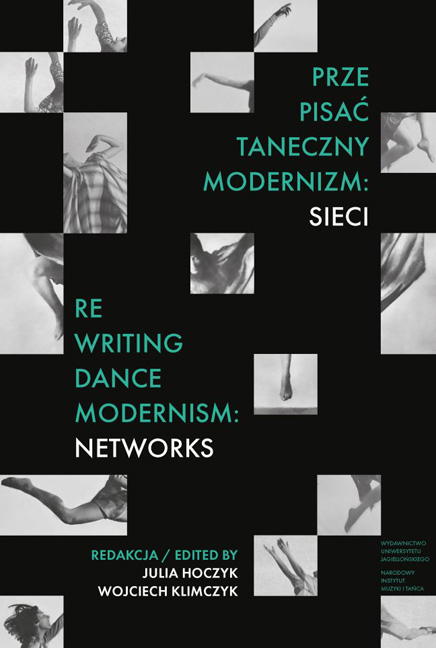Book contents
- Frontmatter
- Contents
- Prze-pisać taneczny modernizm: sieci
- Metodologie: usieciowianie tanecznego modernizmu
- Transmisje: transnarodowe trajektorie tanecznego modernizmu
- Poszerzenia: taneczny modernizm w słowiańskiej Europie Środkowej
- Methodologies: Networking Dance Modernism
- Transmissions: Transnational Trajectories of Dance Modernism
- Expansions: Dance Modernism in Slavic Central Europe
- Biogramy autorów
- Authors’ Biographies
- Indeks / Index
- Miscellaneous Endmatter
- Miscellaneous Endmatter
Re-writing Dance Modernism: A Croatian Perspective
Published online by Cambridge University Press: 01 March 2024
- Frontmatter
- Contents
- Prze-pisać taneczny modernizm: sieci
- Metodologie: usieciowianie tanecznego modernizmu
- Transmisje: transnarodowe trajektorie tanecznego modernizmu
- Poszerzenia: taneczny modernizm w słowiańskiej Europie Środkowej
- Methodologies: Networking Dance Modernism
- Transmissions: Transnational Trajectories of Dance Modernism
- Expansions: Dance Modernism in Slavic Central Europe
- Biogramy autorów
- Authors’ Biographies
- Indeks / Index
- Miscellaneous Endmatter
- Miscellaneous Endmatter
Summary
The original paper I presented at the conference Re-writing Dance Modernism was titled Reclaiming Croatian dance history between the two wars. Its first goal was, above all, to acknowledge the efforts of Croatian dance historians, mainly Maja Đurinović, in writing back into Croatian history the dance artists who have been deliberately omitted and forgotten in the context of art history in the Socialist Federal Republic of Yugoslavia after the Second World War. The second goal of my paper was to introduce Croatian modernism to the international community of dance scholars and thereby expand the mainstream accounts of dance modernism focused on Germany and the USA onto the European ‘margins’ which, according to all evidence, were clearly (albeit never fully recognized as) an integral part of the international modernist community.
When working on the original paper, I relied on the materials gathered in the Croatian dance magazine Kretanja/Movements devoted to the proceedings of the 2016 Zagreb Round table on the Dance Olympics in Berlin. It paid particular attention to the Croatian participants of the 1936 Berlin Dance competition who were prominent actors on the then Croatian dance scene (folklore, ballet and independent), and whose Berlin appearance was so successful that it seemed quite justifiable to call it a miracle. Croatian participation in the Berlin dance competition proved the international connections and relevance of Croatian dancers and dance practices in European contexts on several levels. Accounting for these connections, influences and relevances, in other words, claiming that the Croatian interwar dance artists belonged to the large inter- or even transnational network of modernism that operated since the turn of the century, remains one of the main focal points of this paper.
On another level, an examination of Croatian dance modernism reveals two other characteristics which may be, I suggest, interpreted in terms of the notion of the modernist network in which some features were shared transnationally. One is the tension between the inter/transnational character of modern dance at large, thus also of Croatian modern dance, and “dance nationalism” which can be noted in Croatian dance modernism as an intense interest in folklore. In the discussion I briefly interpret Croatian dance nationalism in light of the specific socio-political and cultural context within which it emerged, but I also suggest that the notion of dance nationalism may be subject to interpretation on a transnational level, as a phenomenon typical of dance modernism.
- Type
- Chapter
- Information
- Re-writing Dance Modernism: Networks , pp. 525 - 544Publisher: Jagiellonian University PressPrint publication year: 2023

